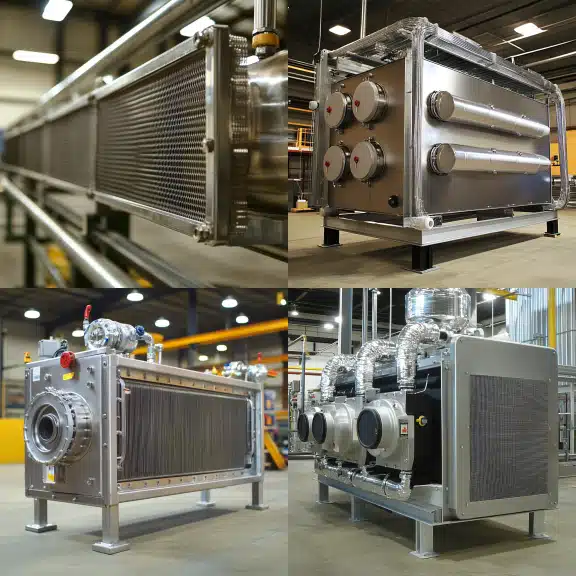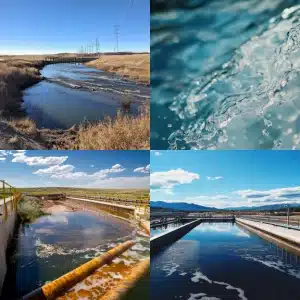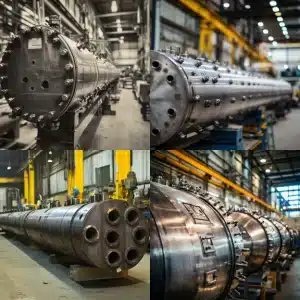
Heat Exchanger Selection in Dehydrator Systems directly affects energy use, drying consistency, and equipment life. The right exchanger keeps heat transfer stable, reduces wasted power, and protects downstream components from temperature swings. Selection also needs to account for pressure integrity, especially when exchangers tie into vessels and piping that operate under code limits. RedRiver LLC helps teams choose and integrate heat exchangers that meet performance goals while supporting safe, compliant operation.
Why Heat Exchanger Selection in Dehydrator Systems Matters
When it comes to improving the performance of industrial dehydrators, selecting the right heat exchanger is essential. At Red River, we recognize that choosing the appropriate heat exchanger ensures optimal energy savings, improved efficiency, and seamless integration with your dehydrator layout. By leveraging our expertise, we help you make informed decisions for superior results.
Key Role of Heat Exchangers in Dehydration Processes
Heat exchangers play a vital role in ensuring efficient heat transfer during dehydration. In particular, they help reduce operational costs by minimizing energy consumption. By integrating high-quality heat exchangers, you improve product performance while cutting down on maintenance fees.
Impact of Proper Heat Exchanger Selection on Efficiency and Performance
The right heat exchanger doesn’t just improve efficiency—it transforms your system’s performance. With Red River’s Heat Exchanger Selection Guide, businesses can enhance thermal performance and durability, even in harsh conditions. As a result, choosing the right model prevents costly failures and reduces downtime.
When paired with the correct dehydrator system, the benefits are undeniable: reduced downtime, lower energy costs, and extended equipment lifespan. In short, this investment pays for itself over time.
Common Mistakes in Choosing Heat Exchangers for Dehydrators
Mistakes in heat exchanger selection often lead to inefficiencies or system failures. For example, mismatched materials or undersized units may compromise energy efficiency and increase operational costs. At Red River, we help businesses avoid these pitfalls by offering tailored evaluations and expert recommendations.
Factors to Consider When Selecting a Heat Exchanger for Your Dehydrator
To maximize efficiency and system longevity, it’s essential to consider these key factors:
Heat Transfer Efficiency and Energy Savings
A high-performance heat exchanger boosts energy efficiency by optimizing heat transfer. Consequently, you achieve faster drying cycles and reduced utility bills.
Materials and Durability in Industrial Applications
Durability is crucial in demanding environments. By selecting corrosion-resistant materials, your system withstands harsh conditions, ensuring long-term reliability.
Sizing and Integration with Existing Dehydrator Systems
Proper sizing is critical for seamless integration. At Red River, we ensure that your heat exchanger aligns perfectly with your system’s capacity, enhancing overall performance.
Best Practices for Integrating Heat Exchangers into Dehydrator Design
Proper integration of a warmth exchanger into your dehydrator design is crucial for accomplishing the most beneficial overall performance and long-term reliability. At Red River, we observe these first-class practices to make sure your warmth exchanger works seamlessly within your system.
Customization Options for Optimized Performance
Customization is prime to getting the maximum from your warmness exchanger. Every dehydrator system has particular necessities, from temperature levels to system loads. By customizing your heat exchanger’s design—such as deciding on the proper substances, heat switch competencies, and configurations—you may beautify its performance and ensure it meets your precise operational needs. At Red River, we tailor solutions that align with your enterprise needs, whether or not you’re in oil and gasoline, biogas, or power technology.
Installation Tips for Seamless Integration
The installation phase is vital for ensuring that your warmth exchanger integrates smoothly into your dehydrator device. We suggest operating closely with a skilled group to evaluate space requirements, connection factors, and airflow styles. Our professionals at Red River ensure that your warmth exchanger is properly aligned and set up, minimizing downtime and reducing operational dangers.
Maintenance Considerations for Long-Term Reliability
Routine upkeep is critical for prolonging the existence of your warmness exchanger. Regular cleansing, inspections, and performance opinions help prevent buildup and ensure steady efficiency. Red River courses protection schedules to preserve your system strolling at peak performance for future years.
Heat Exchanger Selection in Dehydrator Systems Conclusion
Heat Exchanger Selection in Dehydrator Systems determines how efficiently your dehydrator transfers heat, how stable your drying performance remains, and how long the equipment lasts in real service. The right exchanger lowers energy waste, supports reliable dehydration, and reduces downtime. When exchangers connect to pressurized equipment, selection must also respect Pressure Vessel Safety Standards and Compliance, including ASME-driven expectations. With careful sizing, durable materials, and maintenance-ready integration, Heat Exchanger Selection in Dehydrator Systems becomes a long-term advantage instead of a recurring problem.
Need a reliable partner?
Red River specializes in the design and manufacturing of pressure vessels. We also fabricate related items such as prefabricated spools and skid packages.
Reach Out to us today and experience the Red River difference. Where American Made and American Values come together, we care more.
FAQs
1. What types of heat exchangers are commonly used in dehydrator systems?
Common options include shell-and-tube, plate, and air-cooled exchangers. The best fit depends on thermal duty, space constraints, process fluid characteristics, and maintenance preferences.
2. How do I choose the right material for a heat exchanger in a dehydrator?
Material choice should reflect corrosion risk, temperature range, and the chemical nature of the process stream. Selecting a compatible, durable material helps maintain efficiency and reduces long-term maintenance.
3. How does heat exchanger performance affect dehydration results?
Higher exchanger efficiency improves heat transfer stability, shortens drying cycles, and lowers energy use. Poor performance can cause uneven drying, longer runs, and increased wear on other components.
4. What challenges come with retrofitting heat exchangers into existing dehydrators?
Retrofitting can require piping changes, mounting updates, and careful sizing to avoid pressure drop issues. Engineering review is important to ensure compatibility and limit downtime during installation.
5. How often should heat exchangers in dehydrator systems be cleaned and maintained?
Cleaning frequency depends on fouling risk and service conditions. Regular inspection and scheduled cleaning prevent buildup that reduces heat transfer and raises energy demand.
6. How do pressure vessel standards relate to heat exchanger integration?
If exchangers connect to pressurized equipment, they must align with safety codes and inspection expectations. This supports Pressure Vessel Safety Standards and Compliance throughout the system lifecycle.
Key Takeaways
- Heat Exchanger Selection in Dehydrator Systems shapes energy use, drying stability, and equipment lifespan.
- Proper sizing and duty matching prevent inefficiency and performance drift.
- Material compatibility protects against corrosion and fouling over time.
- Pressure Vessel Inspection and Maintenance supports safe, efficient dehydrator operation when vessels are involved.
- RedRiver LLC supports selection and integration at https://www.redriver.team/.




